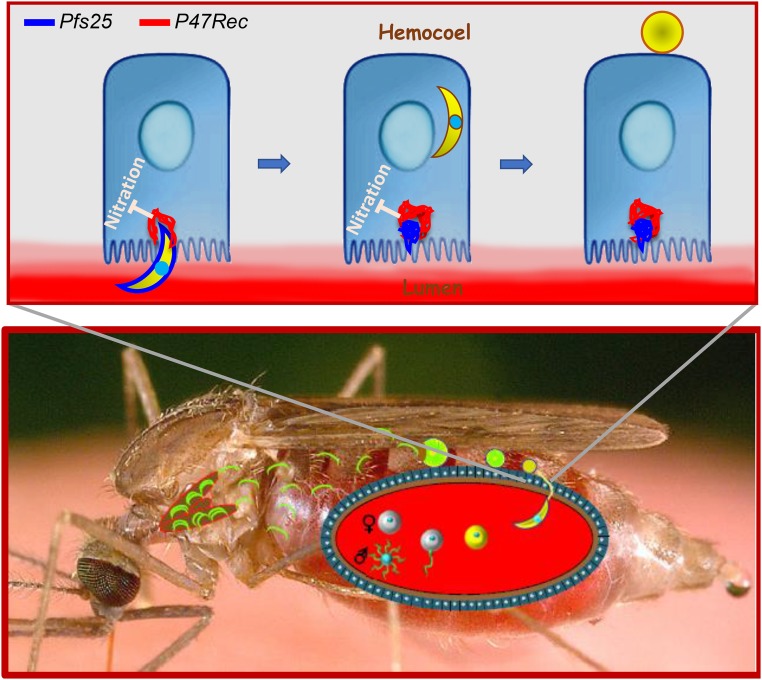Fig. 1.
Plasmodium cycle in the mosquito and possible role of the mosquito Pfs47 receptor (P47Rec). (Lower) A mosquito acquires the Plasmodium parasite when it takes a blood meal from an infected individual. Soon after arrival in the mosquito gut, the Plasmodium sexual forms complete gametogenesis, followed by fertilization. The resulting zygotes differentiate into motile ookinetes that migrate within the blood bolus and about 24 h later cross the midgut to form oocysts on the surface of the midgut epithelium that faces the hemocoel. About 10 d later, thousands of sporozoites that develop within each oocyst are liberated into the hemocoel and invade the salivary gland. Transmission occurs when a mosquito carrying salivary gland sporozoites bites an individual. (Upper) The mosquito P47Rec cytoskeletal protein lines the microvilli of the midgut epithelium. Upon entry, the ookinete induces accumulation of P47Rec around itself and this process inhibits nitration of the parasite by an unknown mechanism. P47Rec colocalizes with Pfs25 which was shed off at the entry site, however not with the parasite during cell traversal. Inhibition of nitration protects the ookinete from attack by the mosquito immune system when it emerges on the side facing the hemocoel, leading to its differentiation into a viable oocyst (right cell). A nitrated ookinete would be destroyed upon exit from the cell (not shown).

